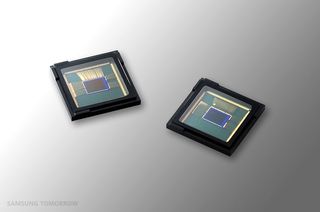
Samsung announced its new image sensor, the S5K3P3, from its own lineup of ISOCELL camera sensors, which offer reduced height and size, as well as 1.0μm pixels, for a better fit inside next-generation ultra-slim smartphones.
“As a trendsetter in the mobile image sensor business, we are pleased to be the first to deliver the most advanced 1.0μm-pixel imager, which meets both high-resolution and slim design requirements for smartphone cameras," said Kyushik Hong, Vice President and Head of S.LSI Marketing at Samsung Electronics. "Starting with 16MP sensor, Samsung plans to further expand 1.0μm-pixel product category and lead the image sensor market for high performing slim mobile devices," he added.
By shrinking the sensor's pixels to 1.0μm, the overall height of the module is reduced by 20 percent (to under 5 mm) to deliver image quality that is on par with 1.12μm-pixel sensors.
Samsung said that its ISOCELL technology reduces color crosstalk of neighboring pixels, making it possible to create smaller pixels without affecting the quality of the sensor.
Even though Samsung promises the same level of quality on the sensors with smaller pixels, we're seeing the desire to make smartphones ever slimmer impact not just battery sizes and chip performance (or increased throttling), but also the progress in smartphone camera quality.
As HTC showed us years ago, the bigger the pixel, the more light it can capture. That means you either use a low resolution with a standard-sized sensor to get those big pixels, or you increase the sensor size. Some companies, such as Sony, have increased the sensor size significantly, but they have also added 21MP resolutions to those sensors, with pixels that are no bigger than what everyone else has.
Here, Samsung wants to keep the same 16MP resolution it used in this year's Galaxy S6. However, instead of increasing the size of the sensor, it wants to decrease it in order to better fit in a device that will be perhaps even slimmer than the Galaxy S6 (which is 6.8 mm).
The S5K3P3 sensor is already available today to other manufacturers, which means other companies could sell smartphones with high-end Samsung smartphone cameras as well.
Follow us @tomshardware, on Facebook and on Google+.